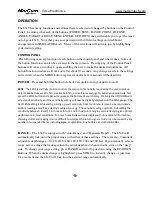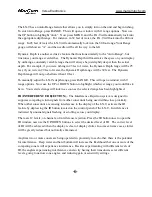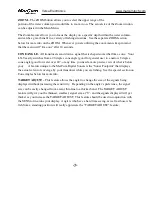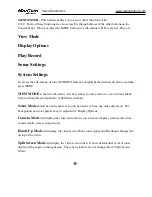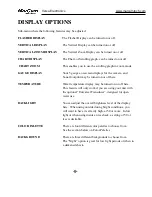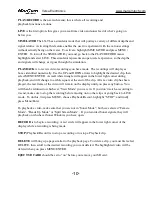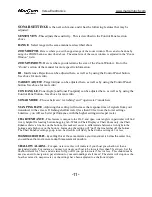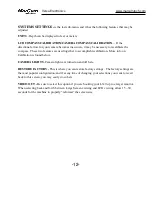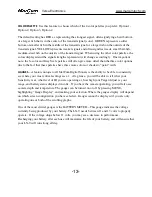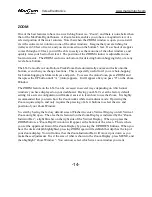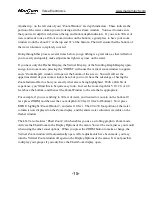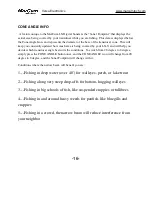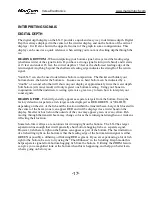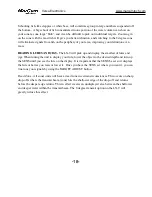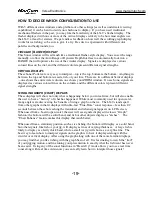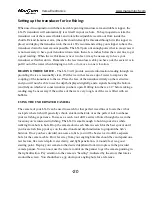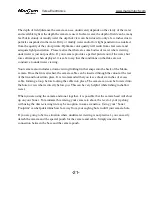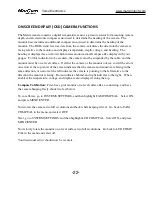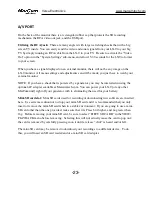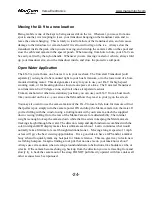
HOW TO DECIDE WHICH CONFIGURATION TO USE
With 5 different sonar windows and a plethora of other settings [as well as underwater viewing
capabilities] it can be hard to decide on which one to display. If you have used traditional
mechanical flashers in the past, you may like the familiarity of the LX-9’s flasher display. The
flasher displayed with one or more of the vertical displays is likely to be how most anglers use
the LX-9, at least for starters. We get endless feedback on how well the scrolling graph display
works for ice fishing, so be sure to give it a try. Be sure to experiment with different color
palettes and backgrounds, too.
CIRCULAR [FLASHER] DISPLAY
This Sonar window will read much like a traditional flasher-style display. You can set the range
manually, or allow the Auto Range or Dynamic Depth Interface to automatically lock into a
RANGE that will optimize the use of the circular display. Signals are displayed as various
colored lines on the dial, and the different colors represent different signal strengths.
VERTICAL DISPLAYS
These Sonar Portals are very easy to interpret—top is the top, bottom is the bottom. Anything in
between the top and bottom is weeds, fish, or your lure. There are two different Vertical displays
—one shows the entire water column, one shows your ZOOM window. On each one, signals are
displayed as various colored lines on the column, and the different colors represent different
signal strengths.
SCROLLING GRAPH (CHART) DISPLAYS
These displays will show not only what is happening below you in real time, but will also enable
the user to have a “history” of what has happened. While most commonly used for open water,
many anglers are discovering the benefits of using a graph on the ice. The LX-9 stands apart
from other graphs in that it displays with ultra-fast “True-Time” sonar response – less than .02
seconds between the echo reaching the transducer and when signal appears on LCD screen.
When used from a boat in open water, the user will see signals displayed in classic “Graph”
fashion; the bottom will be a solid band, and fish or other objects display as “arches”. The
“Chart Enhance” feature makes this display that much better.
When used from a stationary position, such as ice fishing, the bottom will display as a solid band,
but other signals, like fish or your jig, will display as lines of varying thickness. A large fish is
likely to display as a fairly thick band, while a small ice jig will show as a very fine line. The
best way to learn how to interpret signals on the graph is to have it displayed along with the
circular or vertical display. After using the graph along with one of the more familiar displays,
you may find that you like fishing with the graph best of all. It is fascinating to watch the “trail”
of your jigging motion, and fine tuning your presentation to exactly what the fish want has never
been easier. Using any of the sonar functions in “Heads Up” mode allows you to see real time
sonar along with real time video-now you can really learn how to interpret those signals!
-19-
Versa Electronics
www.marcumtech.com

